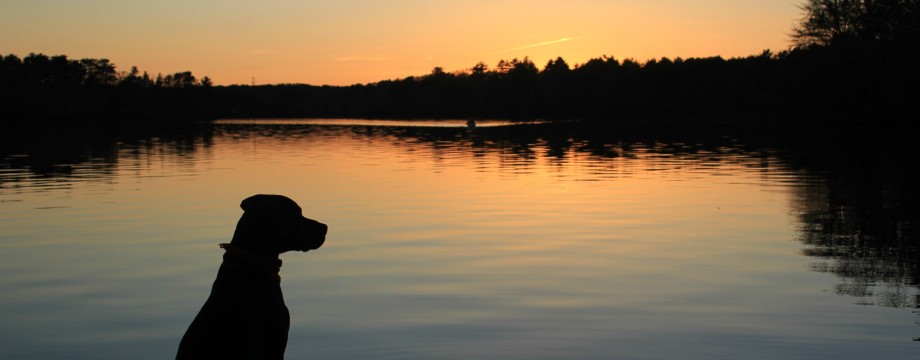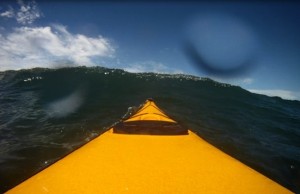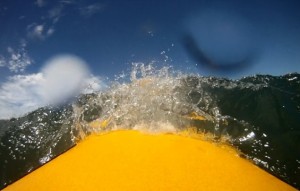At some point in a sea kayaker’s ventures, he/she will encounter water and weather conditions that don’t exactly fit the definition of calm. This can occur either by accident, or the paddler deliberately chooses to paddle in those conditions. Regardless of how they are encountered, I would like to dissect three main conditions and how they can affect a paddler’s journey: wind, current and waves. For less seasoned paddlers who may have never paddled in the conditions that follow, this article offers a brief insight of what to expect, and as well as some techniques used to expedite a trip.
Wind
As most paddlers will discover, wind is a factor that can change and intensify dramatically, sometimes without warning. However, wind does not always have the potential to completely immobilize a paddler and or push them out to sea. A wind coming from the stern can be a fantastic situation if it is boosting you in the desired direction. However, a headwind or broadside wind is a different situation…
A well-seasoned paddler with an appropriate kayak and technique can safely handle winds up to 20mph. From my personal experience, winds of 25mph are rather arduous, but reaching the targeted destination is still possible. Being able to reach a destination in severe winds requires a healthy balance of three main concepts; endurance, paddling technique, and vectoring. A less experienced paddler will most likely become exhausted quickly due to lack of proper paddling technique (i.e. torso rotation) and insufficient paddling fitness. Nothing beats spending time in your kayak to gain fitness and confidence for more challenging conditions!
Vectoring is an important navigational technique (compass required) used by paddlers to stay on course. In a broadside wind, for example, paddling towards a fixed object will cause the boat’s path to curve. This increases paddling distance, takes more time, and uses more energy. Vectoring makes use of a compass to aim towards a selected heading upwind from the target. This will allow the wind to push you in a straight line path that involves less distance traveled, less time taken, and less energy used.
Current
Currents are another major force that the kayaker will encounter at sea. We will discuss two types of currents including: rip currents and tidal current. Rip currents exist where water moves out to sea perpendicular to the shore. A kayaker caught in a rip may notice that their kayak is “slipping” out to sea, perpendicular to their direction of travel. Rip currents can be wide and strong enough to catch a kayaker off guard. The key to handling rip currents is to not panic or waste energy fighting it. Simply continue on the planned course perpendicular to the current. Eventually you will pass out of the rip current largely unscathed albeit a bit further from shore.
Tidal currents have a much stronger effect on kayakers. Similar to wind, tidal currents can set a paddler off course when encountered broadside. To compensate for this effect, vectoring should be used as previously described. Paddling in fast tidal currents head-on requires endurance similar in windy situations as the kayaks headway speed can drastically decreased, therefore increasing time and using more energy. This is why it is important to research what the tides will be doing so you can plan your trip efficiently and safely navigate any strong currents that they may create.
Waves
Sea kayaks are called sea kayaks for a reason. They are specifically designed to handle conditions of the sea…especially waves! Being comfortable with waves comes with experience and it’s up to the paddler to set their own threshold for how big is too big. Most folks will do just fine in ocean waves of 1-3ft in height. However, breaking waves of even this small height can pack a lot of punch and can be tricky to navigate without the proper skill set. More experienced paddlers may be comfortable in ocean waves of 4-6ft or even greater and this is well within the capabilities of the average sea kayak. However, these ocean conditions often make new-comers feel uneasy (and often queasy). Breaking waves of this size can be down-right dangerous and should not be attempted without the proper experience and equipment (helmet).
Paddling in larger waves can certainly be fun, but new paddlers looking for this next level of paddling must be aware that taking on waves of greater height than experienced before can be intimidating and could result in capsize. Proper high and low bracing should be mastered before challenging oneself in rougher seas. Protected bays and friendly shore breaks offer great places to practice these skills. It also doesn’t hurt to sign up for an advanced sea kayaking class and have an instructor work with you on proper bracing techniques!
There’s lots of room to grow as a paddler, and understanding the concepts of wind, currents, and waves are a significant step in the right direction. The best way to experience new and challenging conditions is to get out there and be exposed to them, but do so with an instructor or another paddler who is more experienced in those conditions. That way you can learn from their experience and they can extinguish a potential situation before things go wrong.
-CORAY









3 Responses to Ocean Conditions: What to Expect While Sea Kayaking